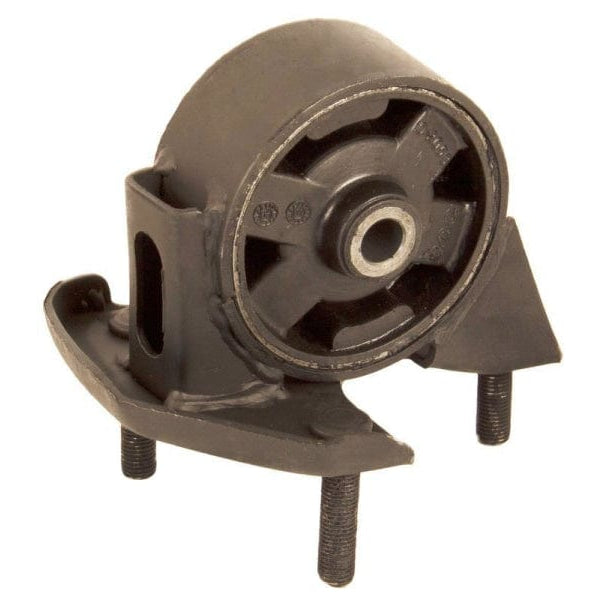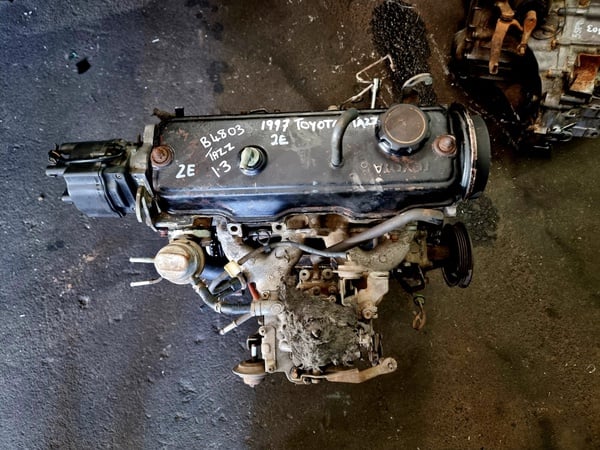Is the Toyota Tazz the Right Car for You? A Guide to Its Features and Value
Is the Toyota Tazz the Right Car for You? A Guide to Its Features and Value
Blog Article
Discover the most up to date Patterns in Engine Innovation Through Tazz
In the rapidly evolving landscape of auto modern technology, Tazz stands at the center, highlighting considerable improvements in engine systems that prioritize both development and sustainability. From hybrid engines that maximize gas effectiveness to the development of hydrogen gas cells, the fads shaping modern powertrains are not just boosting performance but additionally attending to vital ecological obstacles.
Hybrid Engine Innovations
Hybrid engine technologies represent a pivotal change in vehicle technology, incorporating the benefits of internal burning engines with electric propulsion systems. This integration not just enhances gas efficiency yet likewise lowers emissions, conference increasingly strict ecological guidelines. By using both power resources, hybrid engines can enhance efficiency, providing power when needed while conserving fuel throughout much less requiring driving conditions.
Current improvements in hybrid innovation include enhancements in battery efficiency and regenerative braking systems. These innovations permit higher energy healing throughout deceleration, which can be redirected to assist in acceleration or power accessory systems. In addition, makers are concentrating on small layouts and light-weight materials to make best use of the effectiveness of hybrid powertrains.
The development of plug-in crossbreeds has actually additionally broadened the market, allowing motorists to charge their vehicles making use of basic electric outlets. This feature often permits considerable all-electric array, more decreasing dependence on standard fuels. tazz. As the vehicle industry continues to evolve, hybrid engine modern technologies are expected to play a crucial function in linking the space between standard vehicles and totally electrical versions, providing a transitional solution that satisfies varied consumer demands and choices
Breakthroughs in Electric Powertrains
The auto landscape is swiftly developing, with electric powertrains becoming a leading force in lasting transportation. Breakthroughs in electrical lorry (EV) modern technology are considerably boosting efficiency, individual, and efficiency experience. Key innovations include enhancements in battery chemistry, which have boosted energy density, minimized billing times, and extended general battery life.
Solid-state batteries, for instance, guarantee to reinvent the marketplace by providing better safety and security and performance compared to traditional lithium-ion cells. Additionally, advancements in regenerative stopping systems are making it possible for vehicles to recoup power throughout deceleration, adding to overall effectiveness.
In enhancement to battery modern technology, electrical motor layouts are ending up being extra sophisticated. Developments such as incorporated motors and advanced thermal monitoring systems are aiding to optimize power shipment and reduce weight, ultimately boosting car dynamics.

Collectively, these developments emphasize the dedication to transition in the direction of cleaner, a lot more effective transport options, positioning electric powertrains at the forefront of vehicle innovation.
The Increase of Hydrogen Fuel Cells
Increasingly, hydrogen fuel cells are acquiring grip as a sensible choice to traditional inner burning engines and battery electrical automobiles. This innovation takes advantage of the chemical power stored in hydrogen, converting it into electricity via an electrochemical response with oxygen. The main byproduct of this process is water, making hydrogen gas cells an eco-friendly choice with zero emissions at the tailpipe.

Car manufacturers are significantly buying hydrogen gas cell modern technology, acknowledging its possibility for long-range applications and fast refueling capabilities that equal traditional fuels. Furthermore, markets such as heavy-duty transportation and public transit are especially fit for hydrogen gas cells, where battery electrical services may drop short due to weight and range restrictions.
As study and investment remain to increase, hydrogen gas cells are poised to play a considerable function in the future landscape of tidy transport and energy options.
Enhancements in Internal Burning Engines
Technologies in interior combustion engine (ICE) modern technology are transforming standard automobiles to satisfy modern-day environmental standards and performance expectations. One of one of the most significant improvements includes the integration of innovative fuel shot systems. These systems optimize the air-fuel combination, enhancing burning performance and leading to lowered exhausts. Straight gas injection, for instance, enables better atomization of gas, bring about more full combustion and boosted power result.
In addition, turbocharging has obtained prestige, enabling smaller sized engines to deliver higher performance without the weight of larger engines - tazz. This technology not just improves efficiency but additionally adds to reduce gas intake. Variable valve timing systems are additionally being refined, making it possible for engines to adjust to different driving conditions for boosted torque and responsiveness
In addition, using light-weight materials in engine construction is coming to be typical, further boosting fuel efficiency by reducing overall car weight. Engine control devices (ECUs) are increasingly innovative, making it possible for real-time modifications that optimize performance and exhausts.
These improvements collectively indicate a pivotal change in ICE technology, aligning with international sustainability objectives while still giving the efficiency chauffeurs anticipate from their automobiles. As the market advances, these enhancements remain to form the future of standard vehicle engineering.
Future Patterns in Engine Effectiveness
Considerable improvements in engine performance are anticipated as producers focus on integrating find more information sophisticated innovations to fulfill stringent environmental policies and consumer demands. The change towards electrification, crossbreed systems, and alternate fuels is improving the auto landscape, driving click here now developments that improve gas economic situation and reduce emissions.
One of the vital fads is the execution of innovative materials and manufacturing techniques. High-strength alloys and light-weight compounds add to minimized automobile weight, therefore enhancing total performance. In addition, the adoption of turbocharging and variable shutoff timing technologies enables improved power output from smaller sized engines, even more boosting fuel economic situation.

Conclusion
To conclude, the expedition of engine technology exposes significant innovations that prioritize sustainability and efficiency. Advancements in crossbreed engine systems, electric powertrains, and hydrogen gas cells show a dedication to reducing discharges while improving efficiency. Furthermore, enhancements in inner burning engines and a focus on lightweight materials add to general engine performance. As the automotive market continues to develop, these patterns will certainly play an important duty fit a cleaner and even more sustainable future for transport.
From crossbreed engines that optimize fuel performance to the introduction of hydrogen gas cells, the trends forming modern powertrains are not only enhancing efficiency yet likewise dealing with essential environmental challenges.Crossbreed engine advancements represent a crucial shift in automobile technology, combining the advantages of inner combustion engines with electrical propulsion systems.In addition, turbocharging has obtained importance, permitting smaller engines to supply higher efficiency without the see this website weight of larger engines. Additionally, the adoption of turbocharging and variable valve timing innovations allows for boosted power result from smaller sized engines, further improving fuel economic climate.
Renovations in inner combustion engines and an emphasis on lightweight materials contribute to total engine effectiveness.
Report this page